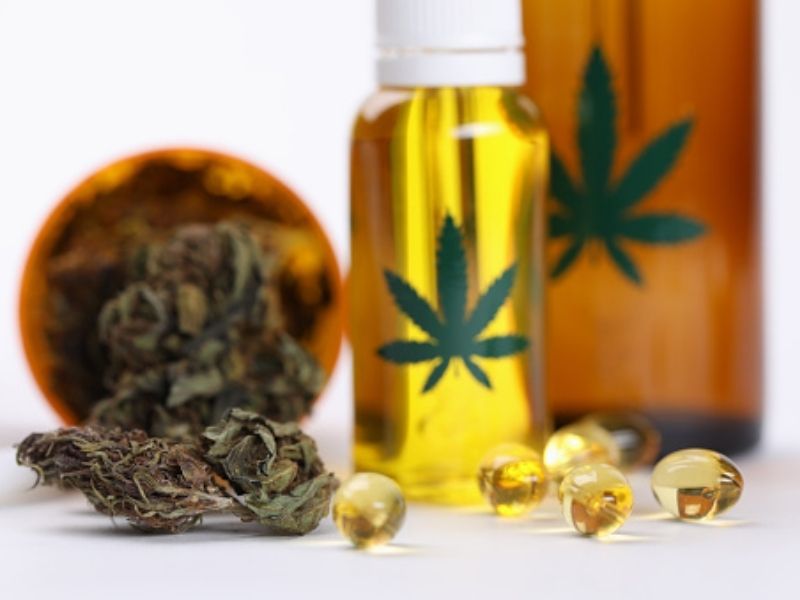
03/03/2022 The cannabis market anticipates undergoing a substantial shift in 2022. The market is growing, and buyers are becoming more aware of cannabis and purchasing a wider range of cannabis goods.
The CBD industry in the U.S. is a seemingly unstoppable force. With each passing year, the cannabis industry evolves and expands substantially, not just in terms of market size but also in terms of manufacturing methods, technology, and cannabis consumer behavior.
This article will glance at the cannabis industry trends that will propel the sector forward in 2022.
It is currently a multibillion-dollar industry that will only grow as millions of people express their consuming preferences. On the other hand, CBD companies have several specific challenges, ranging from raising funding to using ordinary payment processing to promoting traditional channels.
Some major industry trends to look out for :
1. Get ready for the M&A boom in Cannabis Industry
Following a financial drought for even the largest multistate players, activity is picking up just as the march toward U.S. legalization accelerates at both the state and federal levels, creating an ideal setting for an M&A boom.
Marijuana merger and acquisition activity accelerated in 2021 – and is most likely to accelerate in 2022 – due to lower loan rates and demand on larger companies to expand their footprints and increase revenue.
According to an analysis issued by Viridian Capital, 2021 noticed roughly 300 M&A deals in the global cannabis field, up from little more than 70 last year, with public corporations accounting for 85 percent of the buyers. One important reason for the continued M&A activity is that cannabis is a two-tier business, with only a few companies commanding exorbitant prices. Unfortunately, this tendency is least likely to change in 2022. Smaller mergers and acquisitions are likely to continue at a brisk pace, if not accelerate, across the United States as capital-rich multistate businesses expand their footprints in high-growth marijuana jurisdictions.
For example, Trulieve Cannabis, a Florida-based multistate marijuana business, paid $2.1 billion for Arizona-based Harvest Health & Recreation.
2. An Increase in Sales of Cannabis
Legal cannabis sales in the United States might top $30 billion by 2022, according to an updated long-term prediction from marijuana analytics firm Headset. It is an increase in expected revenues from the Seattle-based firm's previous report, released in April, which predicted that the U.S. industry would reach $28 billion in annual sales by 2022. The change reflects the opening of new recreational or medicinal marijuana markets in New Mexico, Connecticut, and Alabama, bolstering an industry that, according to Headset, is "growing swiftly" and shows no signs of slowing down.
3. The Legalization of Cannabis Will Grow Stronger
The public's support for cannabis legalization is at an all-time high, with almost two-thirds of the population favoring federal legalization. Not only that, but this amount is likely to climb over time as the general public becomes more aware of the benefits of consuming cannabis and cannabis products.
Cannabis is now officially legal in Illinois, and campaigners will work hard to have it legalized in other states as well. Currently, roughly half of the U.S. population resides in states where adult-use cannabis is legal in 2022. Five states — Connecticut, New Jersey, New Mexico, New York, and Virginia — have passed legislation legalizing and regulating the industry on the adult-use front. The trend is projected to continue next year, with Delaware and Oklahoma preparing to enact their adult-use laws and momentum growing in Maryland, Ohio, Pennsylvania, and Rhode Island toward the same goal. In addition, Mississippi is expected to pass legalization for medical marijuana for the second time. Furthermore, some additional states, including Arkansas, Florida, Idaho, Missouri, and Ohio, will have cannabis-related measures on their ballots in 2022 to expand their existing laws.
4. Potential Rise in Consumption and Availability of Cannabis Products - Edibles, Cannabis Infused-Beverages, Medical Hemp Products
Recreational edible cannabis products became popular in the United States throughout the 1960s. Various edibles are accessible, both legally and illegally, depending on state legislation. Chocolates, gummies, candies, capsules, oils, and tea are just a few of the edible cannabis items available in both legal and illicit cannabis clinics.
Today, patients are increasingly using edible cannabis products, and polls continually show that most healthcare experts believe cannabis should be a medical alternative for patients.
Most medical marijuana (cannabis) programs concentrate on THC, while hemp-derived CBD has numerous medicinal benefits and is federally authorized. As a result, CBD is quite appealing to patients who do not wish to experience the powerful euphoric effects of THC-forward products.

Image source: UnSlapsh, Cannabis Oil
For some years, medicinal mushrooms have grown in popularity in the wellness industry: mushrooms and hemp offer immune-boosting characteristics, enhanced focus, reduced stress, and neuroprotective properties. Mushroom and CBD combinations are now available in various forms, including teas, tinctures, and capsules.
A novel extraction technology that infuses CBD gummies with hemp-derived Delta-9 (potency less than 0.3 percent) is gaining popularity. The gummies are legal since they contain less than 0.3 percent THC, yet they have a minor psychoactive effect.
Medical CBD products had significant growth in 2021, with no signs of slowing down in 2022 and beyond. As a result, the demand will continue to rise, especially as more Baby Boomers and Generation X patients choose alternative wellness options over prescription drugs.
In the cannabis market, ingestible items are the fastest growing sector, and nothing grew faster in 2021 than beverages. Beverages offer an alternative to alcohol at social gatherings and a new product category to entice cannabis-interested consumers. Cannabis drinks are discreet and simple to consume.
Beverages also provide an opportunity for brands to experiment with combining cannabinoids, terpenes, and flavonoids to produce delectable, endocannabinoid activating experiences. For example, CANN (based in the United States) combines cannabinoids with complementary flavors and terpenes to create a one-of-a-kind drinking experience.
[[relatedPurchasesItems-36]]
5. Brand Makeover
Consumers increasingly seek out businesses that connect with their personal beliefs and consider which ones they want to support more than ever before.
Conventions, festivals, and expos have begun to spring up around the United States to introduce cannabis in a fresh light to more people in a safer setting. However, if cannabis is to become a mainstream commodity, rebranding efforts must go beyond classic stoner and leaf clichés and into the lives of ordinary Americans.
Consumers no longer take what brands say on their labels at face value; instead, customers are increasingly inclining towards performing their research to verify they measure up. As a result, to remain popular in 2022, brands will need to be more open, and the winners will be those that can do so while still standing out with compelling products.
The cannabinoid market is expanding, with more consumers discovering how cannabinoid-enabled products can improve their overall health and wellness. Companies must keep aware and up to speed on the rapidly changing market to move fast as rules and regulations keep changing and as new research releases. The more knowledgeable and informed you are, the more likely you will remain competitive and agile in the industry.
Article By Aakriti Rawat, Beverage Trade Network
TAGS:






